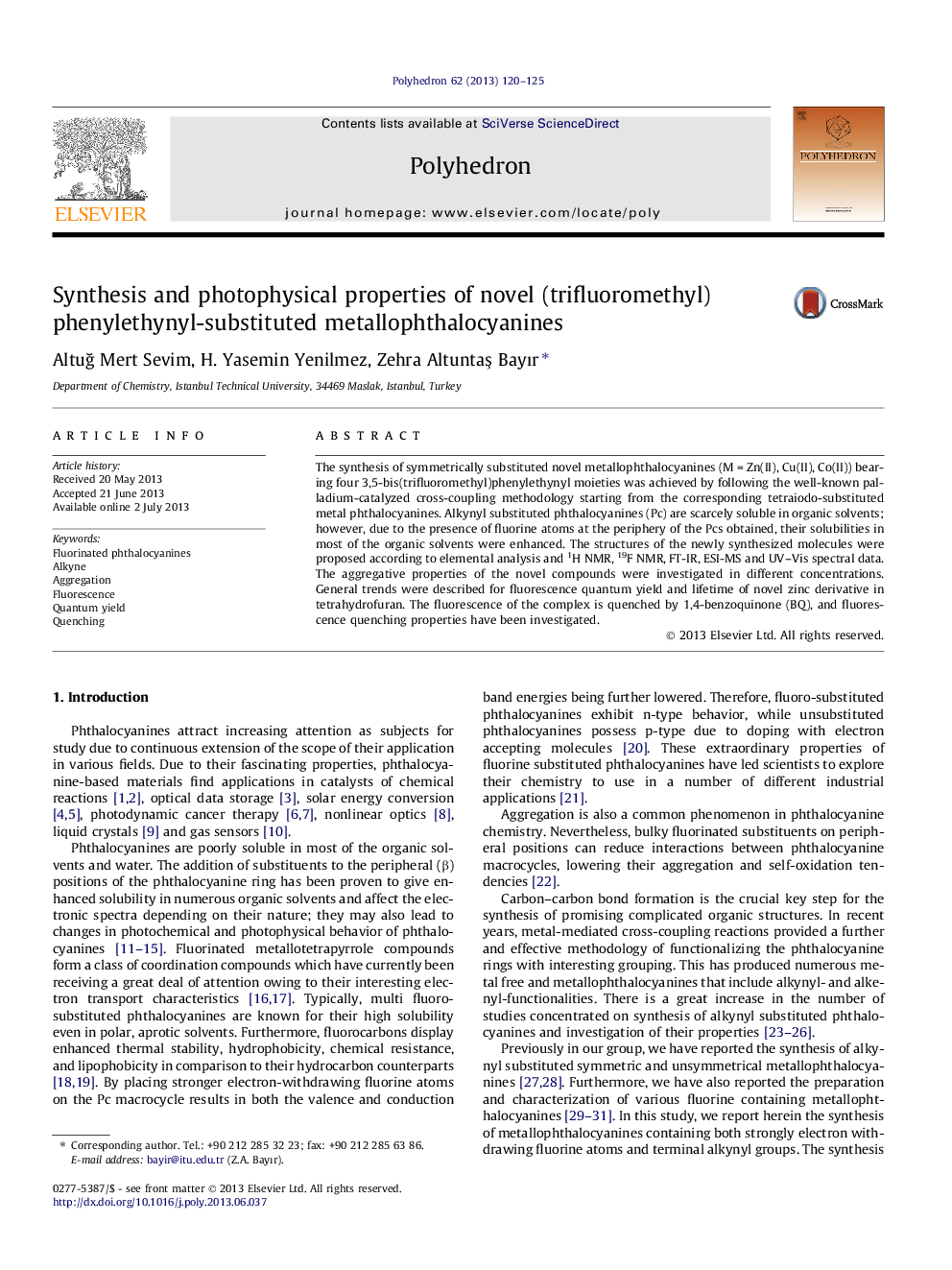| Article ID | Journal | Published Year | Pages | File Type |
|---|---|---|---|---|
| 1337197 | Polyhedron | 2013 | 6 Pages |
The synthesis of symmetrically substituted novel metallophthalocyanines (M = Zn(II), Cu(II), Co(II)) bearing four 3,5-bis(trifluoromethyl)phenylethynyl moieties was achieved by following the well-known palladium-catalyzed cross-coupling methodology starting from the corresponding tetraiodo-substituted metal phthalocyanines. Alkynyl substituted phthalocyanines (Pc) are scarcely soluble in organic solvents; however, due to the presence of fluorine atoms at the periphery of the Pcs obtained, their solubilities in most of the organic solvents were enhanced. The structures of the newly synthesized molecules were proposed according to elemental analysis and 1H NMR, 19F NMR, FT-IR, ESI-MS and UV–Vis spectral data. The aggregative properties of the novel compounds were investigated in different concentrations. General trends were described for fluorescence quantum yield and lifetime of novel zinc derivative in tetrahydrofuran. The fluorescence of the complex is quenched by 1,4-benzoquinone (BQ), and fluorescence quenching properties have been investigated.
Graphical abstractThe synthesis of symmetrically substituted novel metallophthalocyanines (M = Zn(II), Cu(II), Co(II)) bearing four 3,5-bis(trifluoromethyl)phenylethynyl moieties was achieved by following the well-known palladium-catalyzed cross-coupling methodology. The structures of the newly synthesized molecules were characterized by using various spectroscopic techniques. The aggregative properties of the novel compounds were investigated in different concentrations. General trends were described for fluorescence quantum yield and lifetime of novel zinc derivative in tetrahydrofuran. The fluorescence of the complex is quenched by 1,4-benzoquinone (BQ), and fluorescence quenching properties have been investigated.Figure optionsDownload full-size imageDownload as PowerPoint slide
